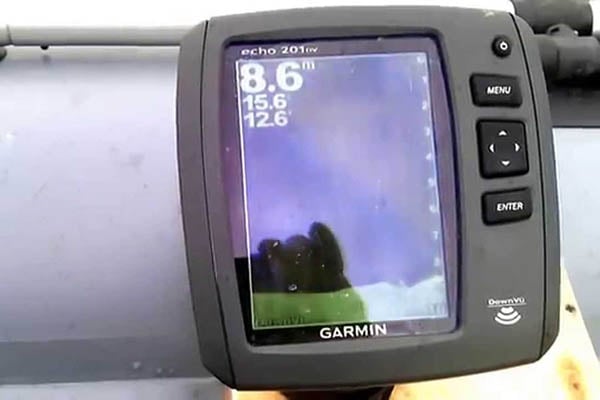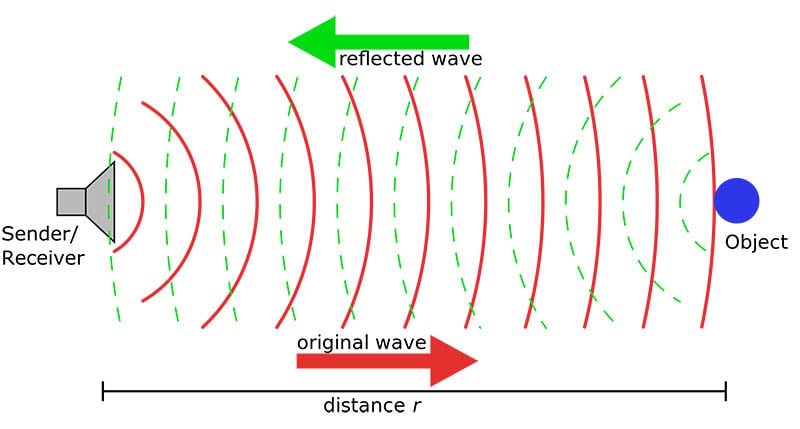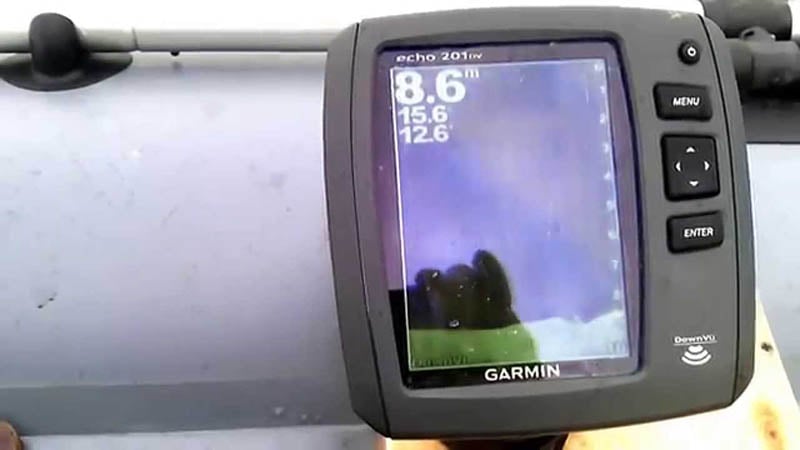Last Updated on
By Luke Brandenburg
Whether you are a competition fishermen or just looking for some more success on your home waters, fishing with sonar can be an excellent tool. Just make sure you know enough about it to keep it from being more of a frustration than a helpful partner!
People have been fishing for thousands of years with very little to no technology. So why do you need, or even want, to use sonar to catch fish? The fact is you don’t “need” sonar to catch the fish you’re looking for on occasion, especially on your home reservoir or other stretch of water. However, it will be a big challenge to fish unfamiliar waters where you don’t have a very good idea of where the fish are at the time.
There are two basic problems when it comes to fishing: finding the fish and getting them to bite. Sonar won’t make fish bite, but it does solve the first problem. If you’re not fishing where the fish are, you won’t catch anything.
What is Sonar?
Sonar stands for SOund NAvigation and Ranging. There are generally two types of sonar systems: active and passive. Active sonar systems emit sound pulses and listen for echoes, while passive sonar systems simply listen for sounds emitted by the objects they are looking for. Fisherman rarely deal with passive sonar, so our focus will be one active sonar.
When a pulse of sound is sent through the water, a portion of it gets reflected back as it strikes an object. Sonar systems measure the time between sent pulse and the echo to calculate distance. They determine direction by using precise direction beams of sound. Active sonar is very similar to an ability that some animals have called echolocation.
Finding Fish with Sonar
Manufacturers have specifically designed some sonar systems to find fish. These systems use the same active sonar technology that ships used during World War II, but with specialized features for fishing. The units concentrate sound into beams and transmit them from a piece of equipment called a transducer. The data obtained from the system displays visually on a screen for easier translation.
Fish finders focus on locating fish by detecting air in their swim bladders. This air causes the sound to change paths and creates a distinctive echo pattern. The sonar system then converts this echo into a particular image on the screen.
By utilizing high sound frequencies, generally between 20 and 200 kHz or even higher, fish finders can provide more detailed information and display fish as separate marks on the screen. Lower frequency sonar systems will work at greater depths, but cannot always display individual objects.
Common Variations of Fishing Sonar
There are two general variations of sonar in the fishing world: down scan and side scan. Down scan sonar is most likely the one most people think of when they think of fishing with sonar. It shows you marks, or fish, as your boat passes over them.
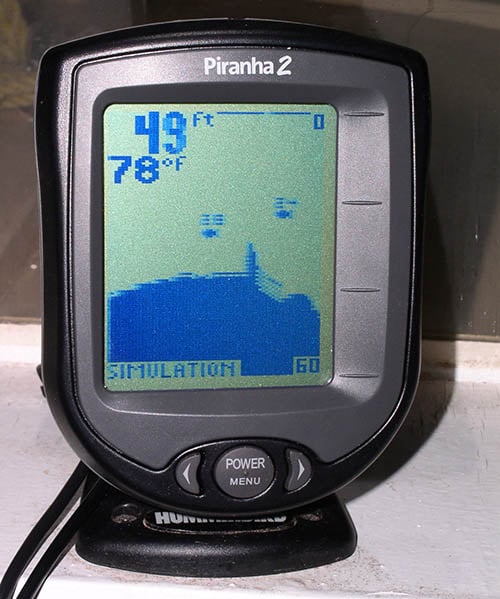
It is important to know that, with down scan sonar like in the image above, your boat will always be on the top right hand side of the screen. All down scan systems show you the overall depth of water below your boat and some provide a chart to help you pinpoint the depth of the fish on your screen. Down scan does not, however, allow you to see whether the fish are to your left or right or how far to the side they are.
This is where side scan sonar comes in. It shows you where marks are located from side-to-side. On a side scan sonar view, your boat would be on the very top middle of the screen. The distance the sonar scans from side to side depends on depth.
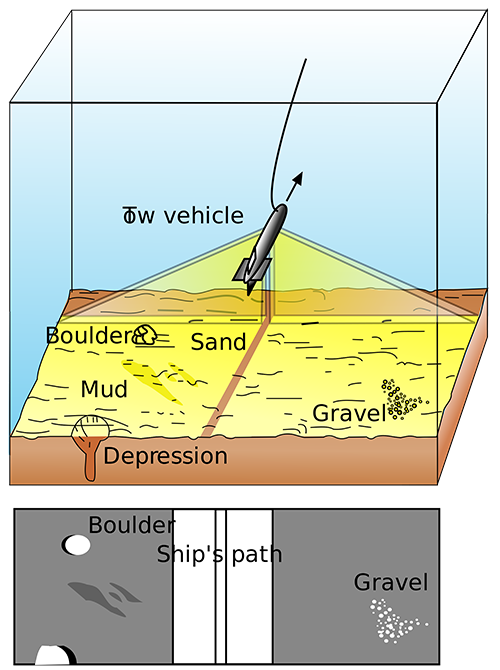
As you increase the range on your side scan sonar, the size of the fish on your screen will get smaller and smaller. You should only be using long range side scans to locate cover or structures where fish may be, not for finding actual fish as they will be too small to see.
Identifying Fish
It takes the basic sonar user a while to determine the difference between a fish and a piece of debris, much less the difference between one kind of fish and another. However, experienced fisherman with high quality sonar devices have learned how to identify different fish species.
With these more detailed sonar systems, each type of fish leaves a slightly different mark on the display as it swims through the sonar beam. Once a fishermen becomes familiar with the different types of fish in the area, their behaviors, and their body structures, he can start to differentiate the different marks.
Marks that are spread horizontally across a hard bottom (which will be differentiated on your solar screen by shade/color versus a soft bottom) are likely bass because they like these types of habitat and like to spread out horizontally when searching for food along the bottom. Clumps of fish stacked vertically on the screen are more likely to by crappie, white bass, yellow bass and other similar species.
Shorter, wide marks often represent slower moving fish such as carp and drum, while dotted lines imply faster moving species such as stripers. Baitfish will swim in large groups and often move in circles creating a big cluster of small dots on the screen.
Size, especially on high-end sonar systems, can also provide a lot of insight into what is swimming below. To use size as an identification tool, fishermen must look at the current scale of the screen. For example, if the screen is showing 20 feet between the surface and bottom, you can estimate what would be about one foot.
Tips for Fishing with Sonar
No matter how many different places you fish or species you fish for, it is important to remain consistent on your sonar unit. Without consistency, it is almost impossible to interpret what your screen is showing. Unless you’re a true sonar veteran, constantly changing your settings will only decrease your chances at success.
Depth can be one of the most important factors in finding fish and getting them to bite. Sometimes a change in depth of as little as 6 inches can make an enormous difference. Always pay attention to depth changes detected on your sonar. The fish will definitely be paying attention and moving accordingly!
Always look for structures and learn how to identify them properly. It is amazing how much fish change behaviors in accordance with simple structures under (and above) the surface. If you can identify an area of submerged brush with good cover for fish, you’ve made a big step towards finding the big one.
There are countless other tips and things you can learn about sonar systems, but the key sometimes is to get to the point where you are comfortable. After all, fishing is suppose to be fun and relaxing. No one wants to spend the whole day on the water trying to figure out their sonar system!
